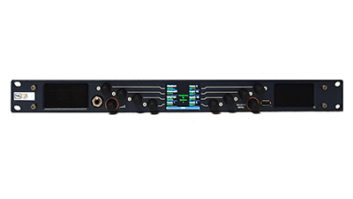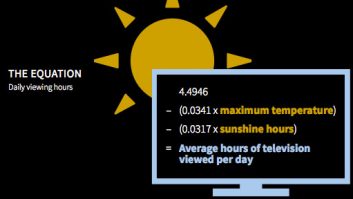For the first time ever, the true scale of the broadcast and media technology industry has been measured, writes Dick Hobbs. The IABM, which represents broadcasting manufacturers and media technology companies worldwide, has commissioned a new research project from Screen Digest, with the results published in early January.
The headline news is that the whole industry is worth around $11.6 billion at 2006 prices. Of that, $544 million (a little under 5%) is retained in the sales channels with the rest going to manufacturers and service providers. The study modelled growth to 2010, and across the industry worldwide this is predicted to be 11.4% year on year.
The structure of the survey was that eleven companies – some large, some mid-sized – took up the IABM’s invitation to be partners in the project, and they had an input into the first stage of the process: segmenting the industry. This resulted in the whole market being broken down into 10 segments representing the major technical and operational blocks of the industry. Within each segment the study defined sub-segments, and, within those, product groups. For example, the size of the lens market was measured within the camera accessories sub-segment within the acquisition segment.
The key to reaching an accurate market scale was to get detailed information from as many manufacturers across the industry as possible and, once they had provided assurances as to confidentiality, Screen Digest collected a great deal of information this way, in the form of a detailed questionnaire and in lengthy interviews.
Senior analyst on the project for Screen Digest was Robert Ambrose. He said: “We had tremendous support and cooperation from dozens of companies in the industry, from the largest to the smallest, and in all regions of the world. This is a clear sign that the broadcast technology industry is increasingly willing to work together to address the challenges and opportunities ahead.”
Indeed, the need for cooperation was identified as one of the key drivers for the future. Part of the reason for this is the sheer size of the supply industry. The study identified only around 100 companies with revenues of over $10 million a year, and 200 with revenues of $1 million a year or more. The top eight manufacturers account for just 45% of total revenues, a lower percentage than might be expected in a mature industry.
Yet next April around 1400 exhibitors will converge on NAB, so clearly there are a very large number of small, specialist niche suppliers. With buyers increasingly looking to buy solutions not point products, all suppliers – not just the smallest – need to develop strategic alliances with other companies to be able to deliver a complete package. In some cases these partners will be competitors at other times, a process the study has called “co-opetition”.
The idea that broadcasters want to buy solutions reflects the modern trend that broadcasters are keen to focus on their core activities – making or acquiring programmes, and earning the revenue to pay for them – and handing the mechanics of doing it over to others.
The service sector – whether systems integration or large-scale outsourcing – was identified by the study as being one of the areas of very high growth in the coming years with a predicted 22% consolidated annual growth from 2004 to 2010 of 22%. This forecast has recently been validated with the announcement that ITV in the UK is to outsource all its playout operations to Technicolor.
The study also looked at the technical challenges facing the industry at present. Tape-based workflows are seen as a major driver for change, not least because 2006 saw the tipping point when it cost less per hour to store content on hard disk than on tape. HD too will continue to drive growth as the HD wave moves from the USA through Europe and on to the Asia-Pacific region: China’s CCTV is understood to have an exceptional budget of $600 million in 2007 to complete the infrastructure needed to support the all-HD Beijing Olympics next year.
New delivery platforms like IPTV and mobile TV are also considered and scoped, with a note of caution that while they look set to grow rapidly they will still represent only a small fraction of the potential revenues from ‘traditional’ television. In 2010, for example, IPTV revenues are forecast to reach $3.3 billion which is a fair sum, but should be seen in the context of total pay TV revenues at that time of $150 billion and advertising revenues of $180 billion.
The complete report runs to over 200 pages, and will be seen as compulsive reading by any manufacturer keen to understand the dynamics of the market in the future. IABM is to be congratulated on pushing this study forward and giving us, for the first time, an idea of just how large an industry we all work in.







